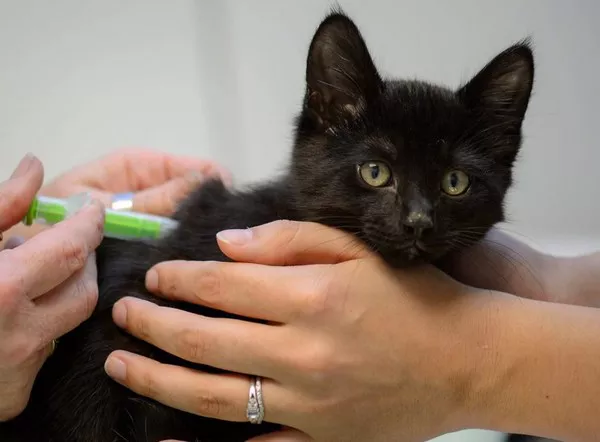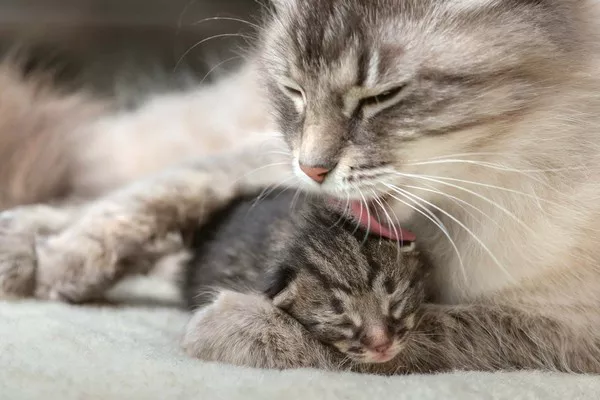Calico cats are known for their striking, tri-colored coats and distinct personalities. They are not a specific breed but rather a color pattern found in various cat breeds. Taking care of these beautiful felines requires attention to specific aspects that cater to their health, grooming, and overall well-being. Understanding how to take care of a Calico cat involves considerations ranging from grooming needs to potential health concerns and their unique cattitude.
Caring for Calico Cats
1. Understanding the Calico Coat
Calico cats sport a combination of white, orange, and black fur, forming a patchwork pattern unique to each individual. Their coats can vary from short to long hair, depending on the breed they belong to.
Regular grooming is essential to maintain the lustrous appearance of their coat and prevent matting.
2. Grooming Essentials
How to take care of a Calico cat’s coat involves regular brushing to prevent tangles and reduce shedding. Use a soft brush suitable for their hair length, and grooming frequency may vary depending on whether they have short or long hair. Bathing should be done occasionally, as too much can strip their coat of essential oils.
3. Diet and Nutrition
Proper nutrition is vital for maintaining a Calico cat’s health. Ensure a balanced diet that includes high-quality cat food with the right mix of proteins, vitamins, and minerals. Consult a veterinarian to determine the appropriate feeding schedule and portion size based on the cat’s age, weight, and health requirements.
4. Exercise and Play
Calico cats are typically active and playful. Engage them in interactive play sessions and provide toys to stimulate their minds and keep them physically active. Exercise is crucial to prevent obesity and ensure their mental well-being.
Male Calico Cats
1. Understanding the Rarity
Male Calico cats are exceptionally rare and often the result of a genetic anomaly. They possess an extra chromosome, making them less common than female Calicos. Due to their genetics, male Calico cats are usually sterile. It’s important to understand and appreciate their uniqueness.
2. Genetic Anomalies
Male Calico cats typically have an extra X chromosome, XXY, making them exhibit the tri-color coat. This anomaly also links to genetic conditions that might need additional monitoring or care. Regular veterinary check-ups are crucial for their well-being.
3. Special Care for Male Calicos
Given their rarity and potential genetic predispositions, male Calico cats may require special attention. Regular vet visits, monitoring for potential health issues, and creating a stress-free environment are crucial for their well-being.
Dental Health
1. Importance of Dental Care
Dental health is a vital yet often overlooked aspect of cat care. Calico cats, like other feline breeds, require dental hygiene maintenance to prevent oral issues. Regular teeth brushing and providing dental treats or toys can aid in keeping their teeth healthy.
2. Dental Check-ups
Regular visits to the veterinarian should include dental check-ups to monitor the condition of the Calico cat’s teeth. The vet can identify any dental issues and provide guidance on cleaning techniques or necessary treatments.
3. Signs of Dental Problems
Understanding how to take care of a Calico cat involves recognizing signs of dental issues. Bad breath, swollen gums, difficulty eating, or pawing at the mouth might indicate dental problems. Immediate veterinary attention is crucial in such cases.
Cattitude
1. Unique Personality Traits
Calico cats are known for their distinct personalities. They are often described as independent, sassy, and affectionate. Each cat’s cattitude might vary, but their unique charm and spunky demeanor are typical traits to embrace.
2. Building Trust
Developing a bond with a Calico cat involves patience and earning their trust. Spend quality time with them, provide a safe and comfortable environment, and be consistent with care and affection. Respect their boundaries and allow them to approach you at their pace.
3. Communicating with Your Calico
Understanding your cat’s body language and vocalizations is key to understanding their needs and moods. Calico cats might express themselves through meows, purring, or even their body posture. Observing and responding to their cues will strengthen the bond between you and your feline friend.
Calico cats are unique in their appearance and personalities, making them cherished companions for many cat enthusiasts. Caring for these beautiful felines requires attention to specific needs, regular veterinary care, and understanding their distinct cattitude. By providing proper grooming, nutrition, dental care, and a nurturing environment, you can ensure the well-being and happiness of your Calico cat.
FAQs about transporting Calico cats:
1. How do I safely transport my Calico cat?
Transporting a Calico cat requires a secure and comfortable carrier. Ensure the carrier is well-ventilated, spacious enough for the cat to stand and turn around, and secure so that the cat cannot escape. Place a soft blanket or bedding inside for comfort.
2. What is the best way to acclimate my Calico cat to traveling?
Gradual acclimation is key. Start by leaving the carrier open in a familiar environment with some treats or toys inside. Once your Calico cat is comfortable going in and out willingly, take short trips, gradually increasing the duration to get them accustomed to traveling.
3. Are there any special considerations when traveling long distances with a Calico cat?
Long-distance travel may necessitate planning for breaks. Ensure the carrier has water and that you stop periodically to allow the cat to stretch, use a litter box, and drink water. Secure the carrier in the car to prevent shifting.
4. Should I sedate my Calico cat for travel?
Sedation should be discussed with a veterinarian. It might be necessary for particularly anxious cats, but it should only be administered under professional guidance and after a thorough examination.
5. What should I do if my Calico cat gets motion sick during travel?
If your cat is prone to motion sickness, consult your vet for possible remedies. Keep the carrier well-ventilated and try not to feed them right before travel. Consider covering the carrier with a light cloth to reduce visual stimuli.
6. How can I make the transport less stressful for my Calico cat?
Comfort items, such as familiar bedding or toys, and your presence and reassurance, can help alleviate stress. Try to maintain a calm and quiet environment, avoiding sudden loud noises or excessive movement.
7. Can I travel with my Calico cat on a plane?
Yes, many airlines allow pets, but regulations vary. Check the airline’s policies regarding pet transport and ensure compliance with carrier size and documentation requirements.
8. What documents or preparations are needed when transporting a Calico cat across borders or internationally?
When crossing borders or traveling internationally, specific documentation like health certificates, vaccinations, and sometimes microchipping may be necessary. Research the requirements of the destination country and consult a vet well in advance.
9. Should I feed my Calico cat before travel?
It’s advisable not to feed your cat a large meal just before travel to reduce the likelihood of motion sickness. However, ensure they have access to water.
10. Is it advisable to let my Calico cat out of the carrier during travel?
For safety reasons, it’s best to keep your cat secured inside the carrier during travel. Unleashing them in a moving vehicle or at unfamiliar locations can be risky.
Transporting your Calico cat requires planning and consideration for their comfort and safety. Always prioritize their well-being, and if you have concerns or specific questions, consulting a veterinarian is highly recommended.
Related Topics:
What Do Calico Cats Like To Eat? The Surprising Answer
Are Calico Cats Rare? Here’s What Science Says
Why Does My Calico Cat Keep Biting Me: 4 Common Reasons


























